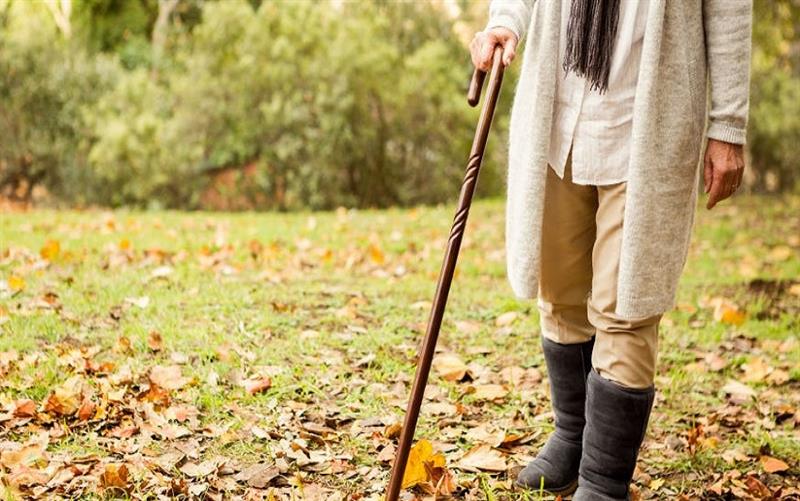
Walking canes serve as tools for empowerment in addition to being mobility aids. Canes are essential for increasing seniors' quality of life since they increase independence, balance, and lower the risk of falls. The correct cane selection and use can make all the difference, allowing seniors to enjoy their golden years with more security and assurance.
Maintaining one's independence and mobility as one ages becomes crucial. However, problems including diminished balance, muscle strength, and coordination might arise as a result of aging naturally. These modifications raise the possibility of falls, which can result in harm, a loss of autonomy, and a general deterioration in life quality. Seniors can use walking canes to increase their balance and lower their risk of falling because they offer both psychological and physical assistance.
1. Enhancing Stability
Walking canes act as an extra point of contact between the body and the ground, creating a triangular base of support. This additional contact enhances balance by compensating for any instability caused by muscle weakness, uneven terrain, or sudden shifts in movement. For seniors who feel wobbly or unsteady, a cane offers a reliable anchor to maintain equilibrium during daily activities like walking, standing, or turning.
2. Reducing Pressure on Joints
Joint pain and weakness, often caused by conditions like arthritis or osteoporosis, can make walking painful and challenging. A walking cane helps redistribute a portion of the user’s body weight from the affected joint to the cane, reducing strain on knees, hips, and ankles. This alleviation of pressure minimizes pain and allows seniors to move with greater ease and comfort.
3. Improving Gait and Posture
As we age, changes in posture or an uneven gait can increase the likelihood of falls. Walking canes encourage a more natural walking rhythm and help seniors maintain an upright posture. Proper posture reduces strain on the back and muscles, while a steady gait minimizes the risk of tripping or stumbling. Specialized canes, such as quad canes with four contact points, can further enhance this support.
4. Providing Support During Recovery
Seniors recovering from surgeries like hip replacements, injuries, or strokes often experience temporary mobility challenges. A walking cane provides the necessary stability during this period, helping users regain strength and balance safely. Using a cane during recovery reduces the risk of reinjury and allows seniors to transition back to full mobility gradually.
5. Boosting Confidence
The fear of falling is a common concern among seniors, often leading to reduced physical activity and a more sedentary lifestyle. A walking cane offers psychological reassurance, giving users the confidence to walk independently and engage in social activities. This renewed confidence can prevent muscle weakness caused by inactivity, further reducing fall risks.
6. Navigating Uneven Surfaces
Uneven surfaces, such as cobblestone streets, grassy lawns, or gravel paths, can be particularly tricky for seniors. Walking canes provide the necessary support to traverse these terrains by offering additional stability and acting as a buffer against sudden changes in ground level. With a cane, seniors can confidently tackle outdoor environments that might otherwise pose risks.
7. Preventing Fatigue
For seniors with limited stamina, prolonged walking can lead to muscle fatigue, making them more prone to falls. By allowing users to transfer some of their weight to the cane, this tool conserves energy and reduces physical exertion. This is particularly beneficial for those with conditions like chronic fatigue syndrome or cardiovascular issues.
8. Customizing to Specific Needs
Modern walking canes come with features that cater to the unique needs of each user. Adjustable-height canes ensure proper alignment with the user’s height, while ergonomic grips reduce hand fatigue and improve comfort during prolonged use. Wrist straps prevent the cane from falling if released, while specialized cane tips, such as rubber stoppers or ice grips, offer additional traction on slippery surfaces.
9. Offering Visual Guidance
For seniors with visual impairments, a walking cane can help them identify potential obstacles, changes in elevation, or uneven ground. This is particularly useful in unfamiliar or poorly lit environments. The cane provides tactile feedback, allowing users to detect hazards before stepping, significantly reducing the likelihood of tripping.
10. Acting as a Physical Cue
Using a walking cane serves as a reminder for seniors to slow down, focus on their movements, and maintain a deliberate pace. Rushing can increase the risk of falls, especially for those with balance or mobility issues. The presence of the cane encourages mindfulness, helping users remain steady and intentional in their movements.
11. Reducing the Impact of Medical Conditions
Chronic conditions like arthritis, Parkinson’s disease, or peripheral neuropathy often affect mobility and coordination. Walking canes act as compensatory tools, enabling seniors to maintain better control over their movements. For example, Parkinson’s patients experiencing freezing episodes can use the cane to initiate movement, while neuropathy patients benefit from the cane’s ability to provide stability on uneven ground.
12. Promoting Safe Independence
One of the greatest benefits of walking canes is that they allow seniors to retain their independence. By providing the support needed for mobility, canes reduce reliance on caregivers or family members. Seniors can confidently navigate their daily routines—whether shopping, attending social events, or enjoying a walk in the park—knowing they have a reliable tool for stability.